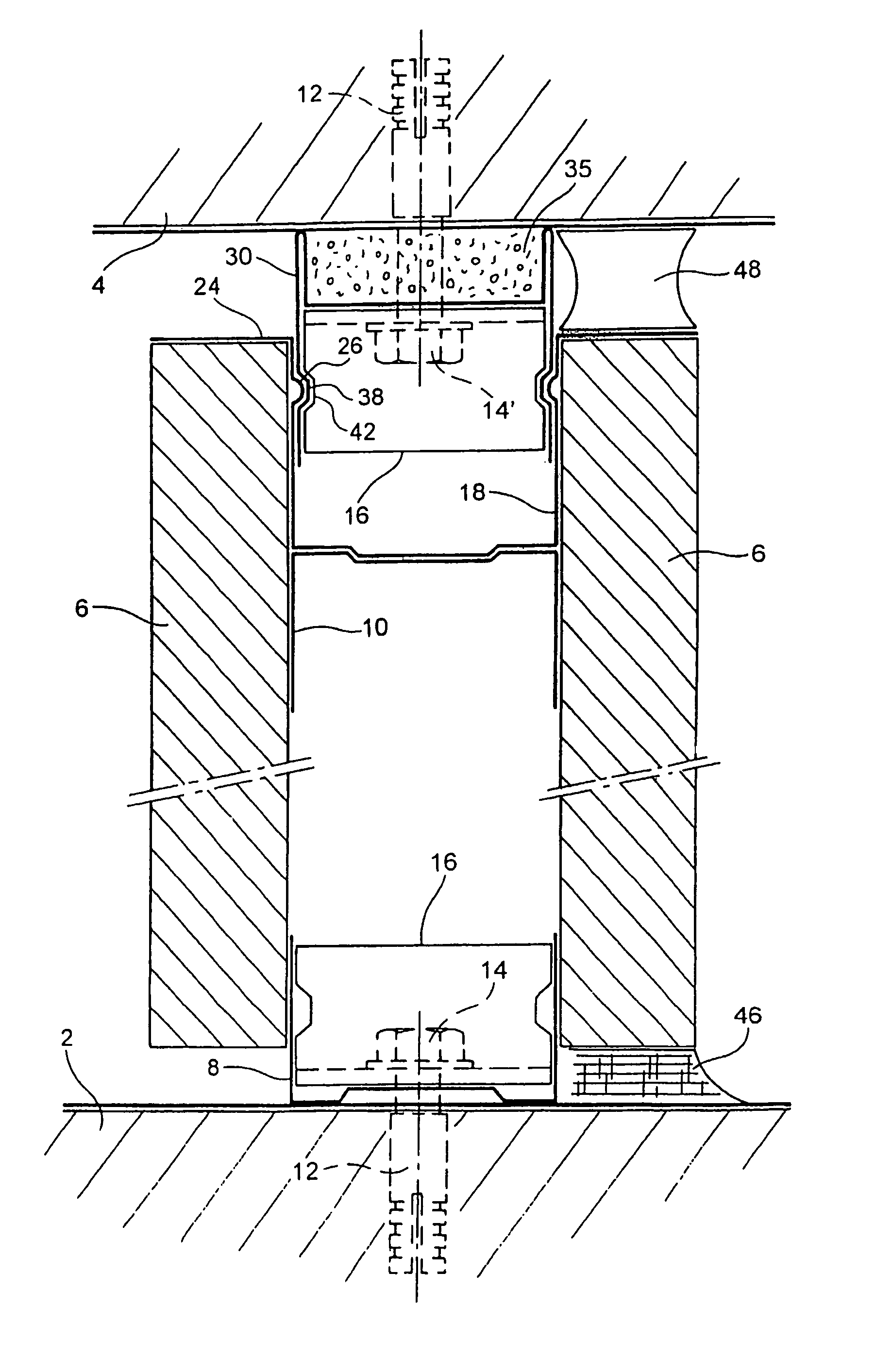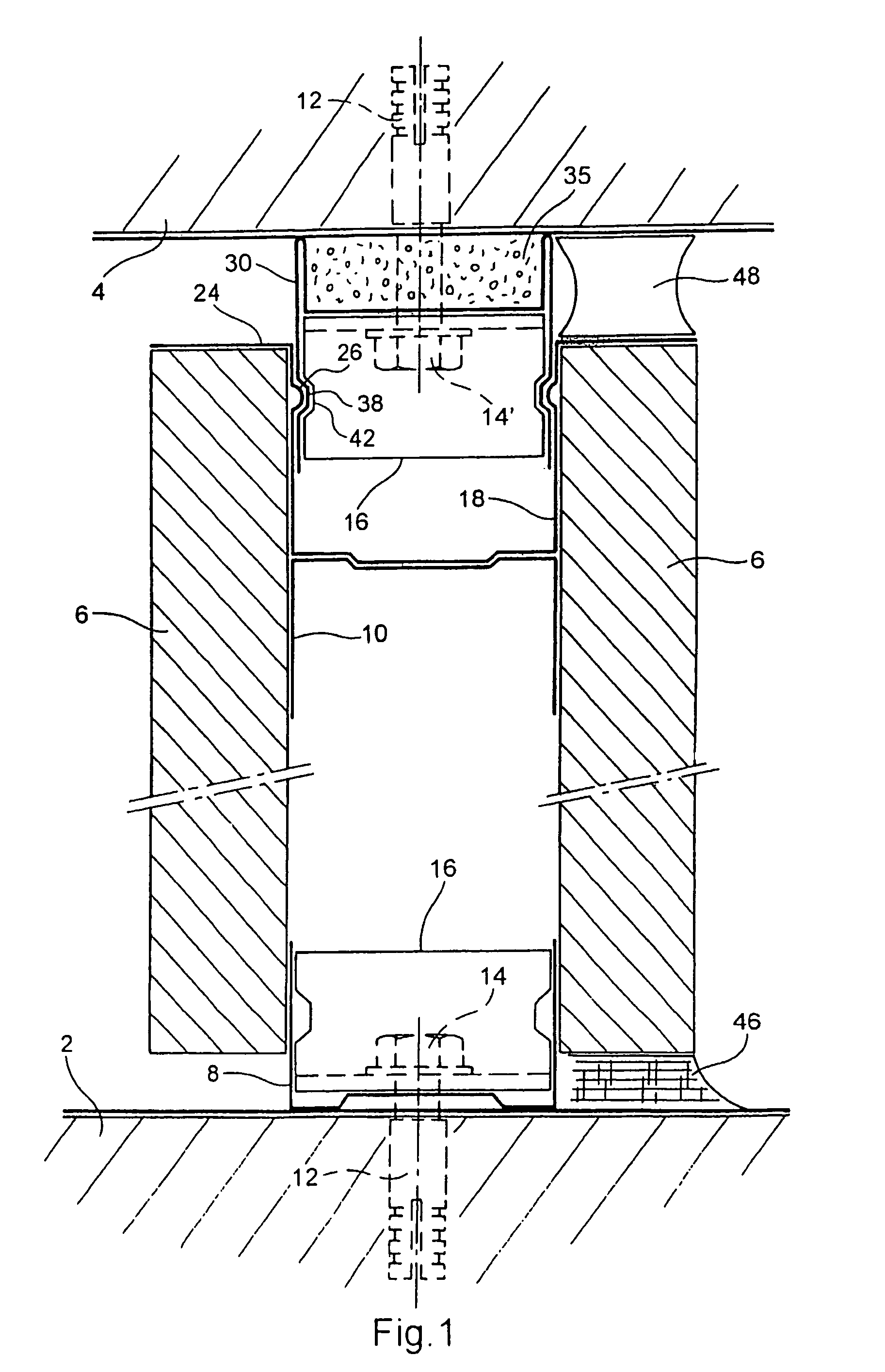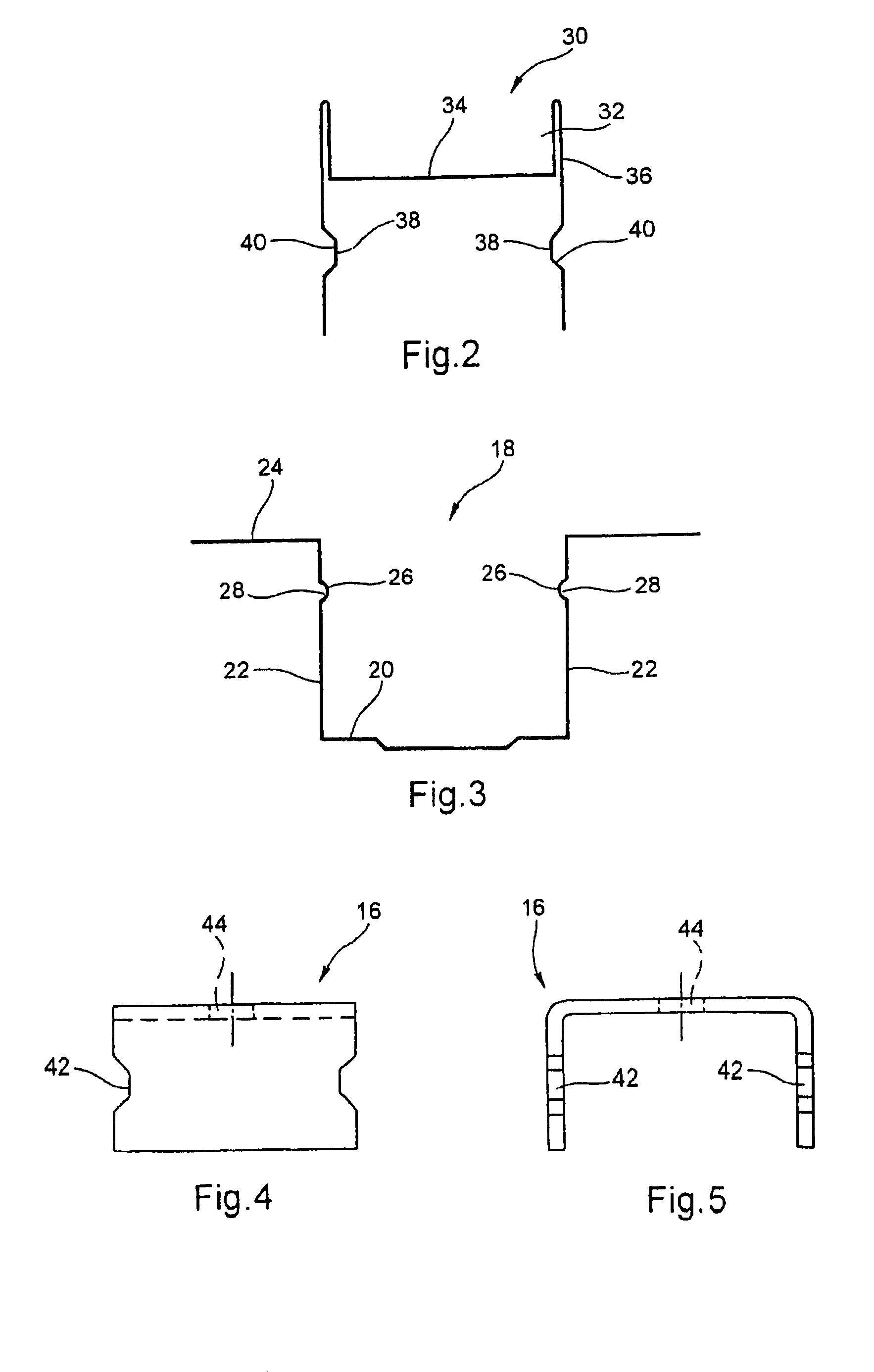[0004]The object of the present invention therefore is to provide a device for the earthquake-resistant mounting of a partition enabling a partition, even when loaded, to
resist the stresses undergone during an earthquake. The partition is advantageously easy to
mount. Preferably the device also makes it possible to keep the fire-resistant and acoustic properties of a similar “conventionally” constructed partition, and the additional cost of the device is limited with respect to a conventional
assembly.
[0007]This device enables the upper rail to be uncoupled from the ceiling. When the device is implemented to produce a partition, the upper rail receiving the covering is not connected to the ceiling but is connected to a member (termed slide here) which can be moved vertically with respect to a holding and guiding member (termed top runner here) itself fixed to the ceiling. Such a device may thus be placed adjacent to a ceiling, at the top of a partition, to enable the latter to take the accelerations undergone during an earthquake without damage, or at least to limit the damage. During the mounting of the partition, the snap-fitting means provided on the slide and on the top runner may be engaged such that the slide is held onto the top runner. As these snap-fitting means are reversible, when stress is applied due for example to an earthquake or to a change in load, the slide can move with respect to the top runner.
[0008]In one embodiment, the top runner is for example in the form of a rail of profiled section comprising two side flanges extending parallel to the arms of the U-section of the slide and within those arms. Here the top runner is substantially in the form of a rail of profiled section of the type used as upper rail. Preferably, each of the side flanges of the top runner and each of the arms of the U-section of the slide comprises a boss projecting inwardly respectively from the flanges and from the arms, the bosses of the slide being adapted, when in resting position, to locate in the bosses of the top runner. In this variant embodiment, the slide may come into snap-fitting engagement on the top runner when the latter is fixed to the ceiling. This facilitates the
assembly of the partition, or more particularly of its framework, since it is not necessary to support the slide and the upper rail which is joined to it, during the installation of the vertical uprights which afterwards receive the covering boards. The bosses made in the slide and in the top runner may be continuous and thus form grooves over the entire length of the corresponding members or else be discrete and therefore form a discontinuous pattern over the slide and the top runner. However, to allow relative longitudinal sliding between the top runner and the slide during mounting, the bosses made on the top runner preferably form a continues groove.
[0009]To avoid the covering boards rising up to the ceiling during formation of a partition, the slide advantageously comprises at each free end of the arms of its U-section a rim extending outwardly of the U, substantially perpendicular to the arms of the U. During implementation of the device, the covering boards then come into
abutment with those rims. This also enables an aesthetic finish of good quality to be provided at the top of the partition. To improve the finish, the device advantageously further comprises an elastic joint adapted to be located between a rim of the slide and the ceiling on which the top runner is fixed. This joint enables the gap appearing between the top of the covering and the ceiling to be hidden.
[0010]The top runner is for example a member of profiled section comprising two side flanges slidingly mounted between the arms of the U-section of the slide and also a housing, disposed between the side flanges, on the opposite side from the slide, and adapted to receive a material having fire-retardant properties. This form of top runner is advantageous since it enables
fire resistance to be maintained despite the discontinuity of the covering which appears adjacent the ceiling. The presence of a material in said housing also enables sound-proofing to be provided between the two walls of the partition improving the sound insulation performance of the partition.
[0015]This partition is preferably such that the covering is fixed at its upper portion so as not to extend beyond the slide, thus leaving a
free space between the covering and the ceiling, it being possible for said space to be filled by a joint of elastic material. In this manner, the covering of the partition is uncoupled from the ceiling and can be rendered “floating” with respect to the ceiling. To improve the disconnection of the covering boards from the structure of the building, said boards are advantageously also mounted so as to be floating with respect to the lower rail.
 Login to View More
Login to View More  Login to View More
Login to View More 


